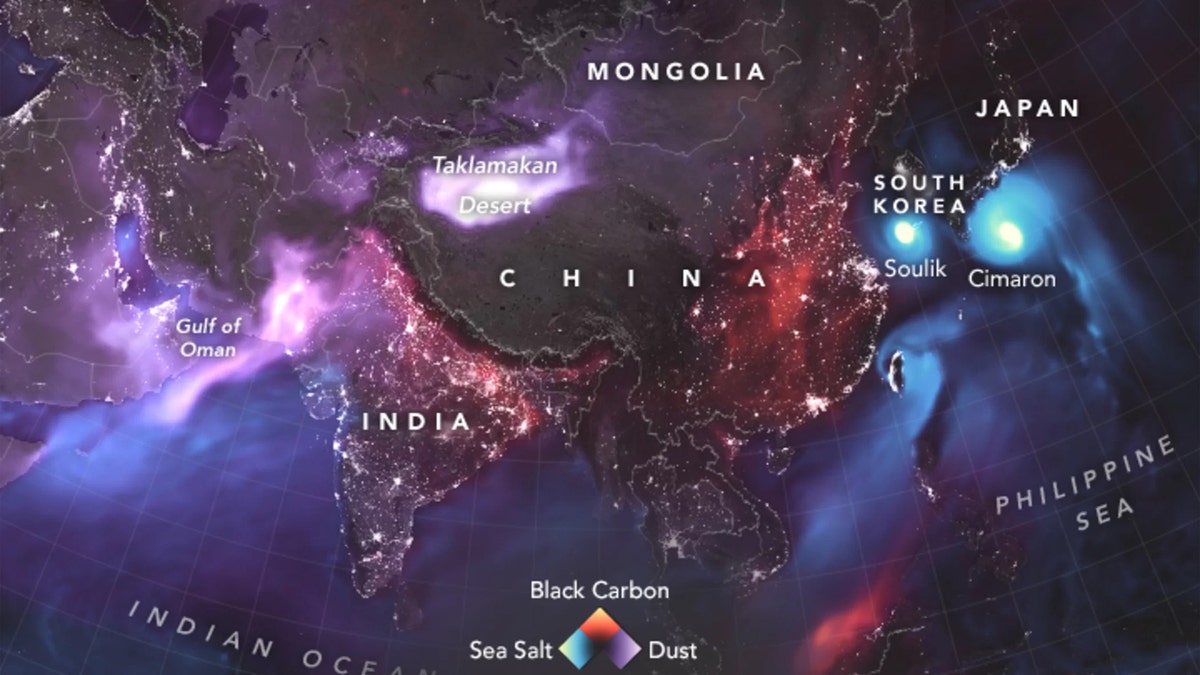
Credit: NASA Earth Observatory
We live our whole lives wandering from one cloud of dust to the next. The air is full of the stuff: salt wafting in from the sea, black carbon soot from wildfires and all sorts of dusty emissions from heavy industry.
Usually, all that aerosolized gunk is invisible to us — but not to NASA's satellites and ground sensors. In a stunning new illustration, shown above, NASA's Earth Observatory reveals the invisible, tiny particles swirling around us.
NASA combined data from multiple sensors on satellites such as the Moderate Resolution Imaging Spectroradiometer (MODIS) sensors on Aqua and Terra, as well as ground based sensors, to create a colorized image of the aerosol plumes. [Earth Pictures: Iconic Images of Earth from Space]
Some of these dust clouds are the result of weather events. Hurricane Lane near Hawaii and typhoons Soulik and Cimaron off the coast of Japan have all kicked sea salt into the atmosphere. Over the Sahara Desert in northwest Africa and the Taklamakan Desert in northwest China, landlocked winds have similarly formed clouds of fine particles.
Western North America and south-central Africa reveal signatures of another sort of aerosol: the smoke from wildfires, which are often set by humans — either intentionally, as part of annual agricultural cycles in Africa, or through carelessness as in North America. Some of that smoke from North America appears to have drifted east over the Atlantic Ocean in the image.
NASA noted that this image wasn't shot by a single camera and isn't even a composite of a group of images directly taken by satellites or ground sensors. Instead, NASA used some careful mathematics to bring together data from a range of different types of sources in order to figure out where the densest concentrations of loose particles in the atmosphere are right now.
Originally published on Live Science.




















